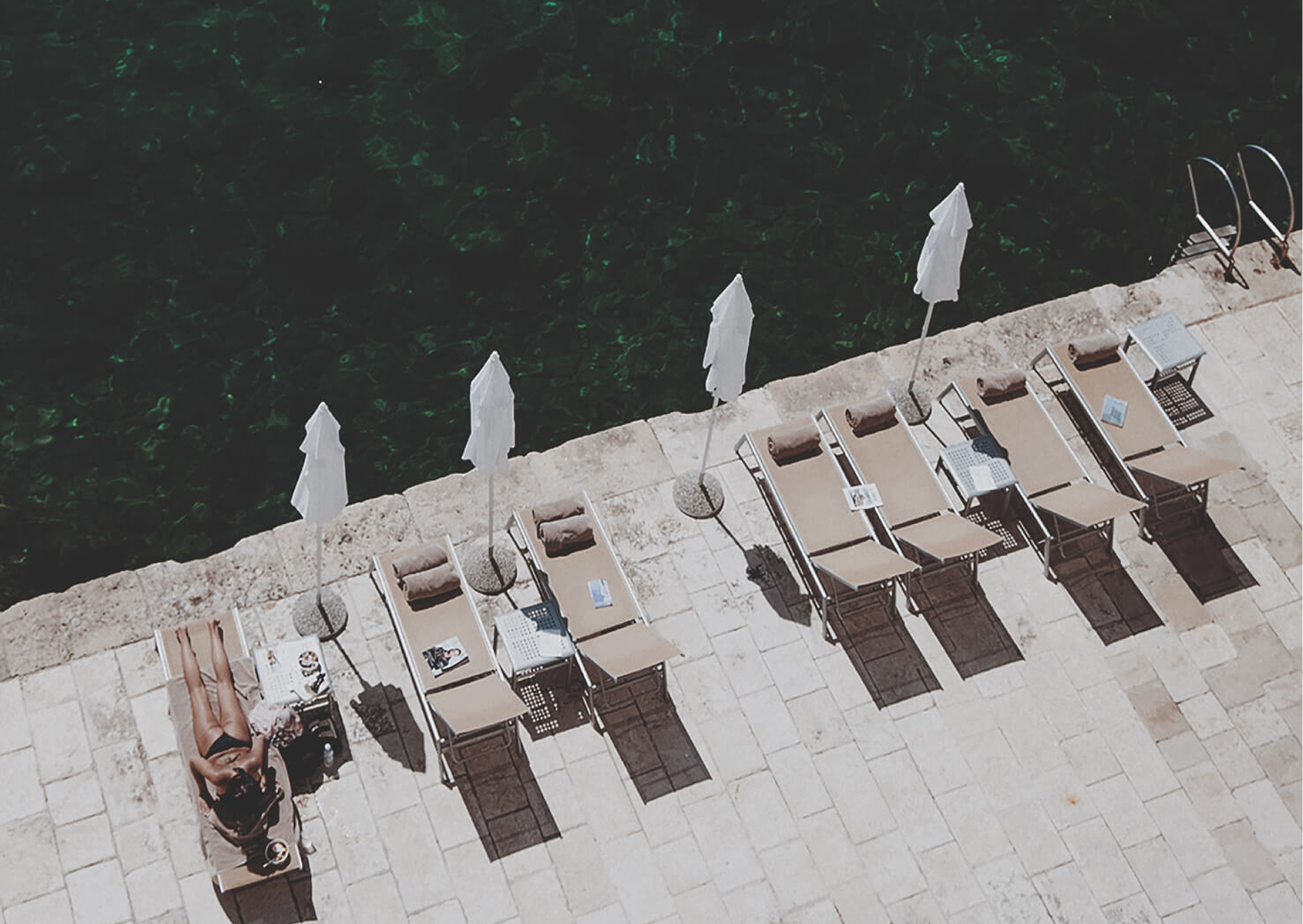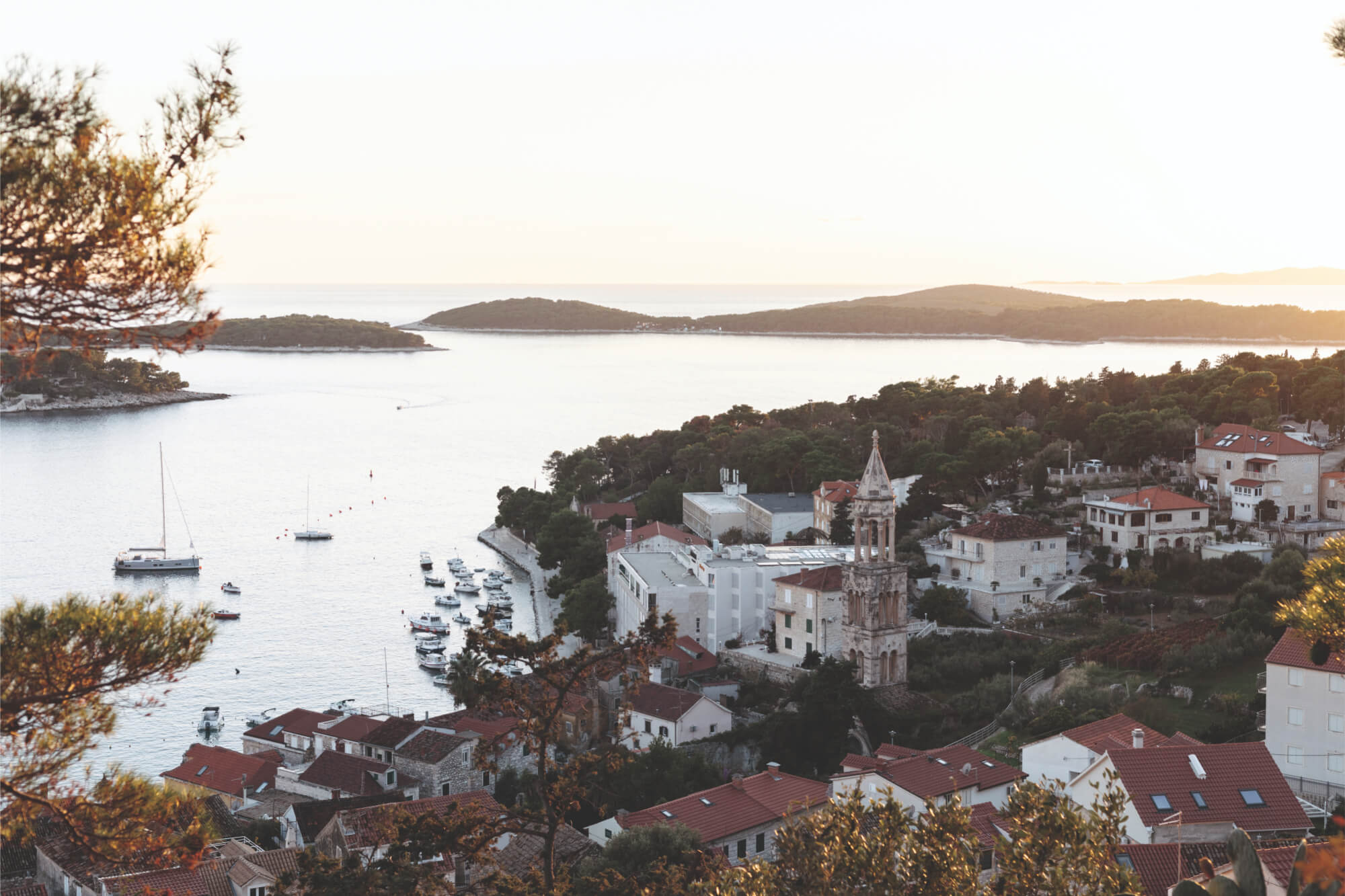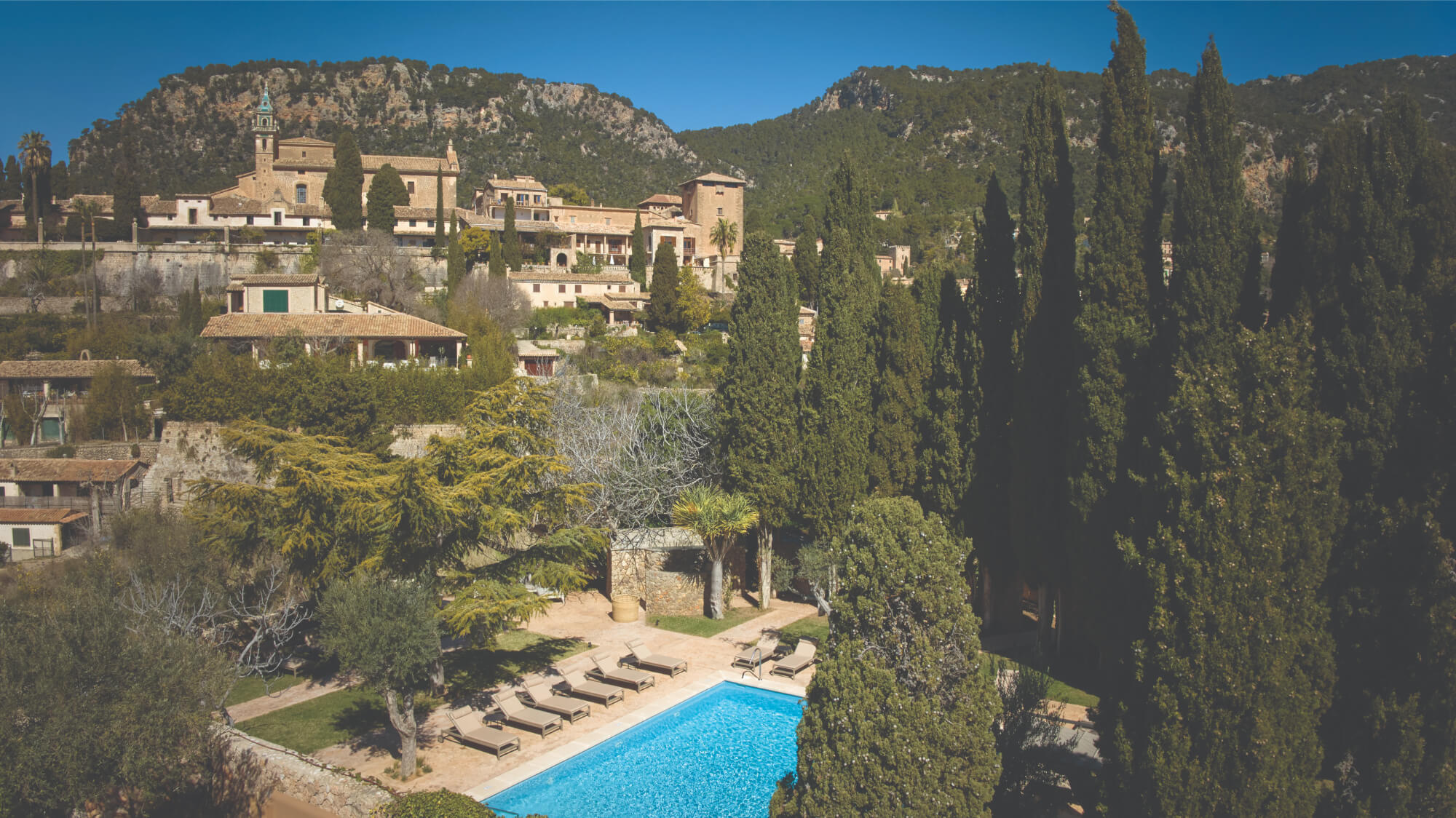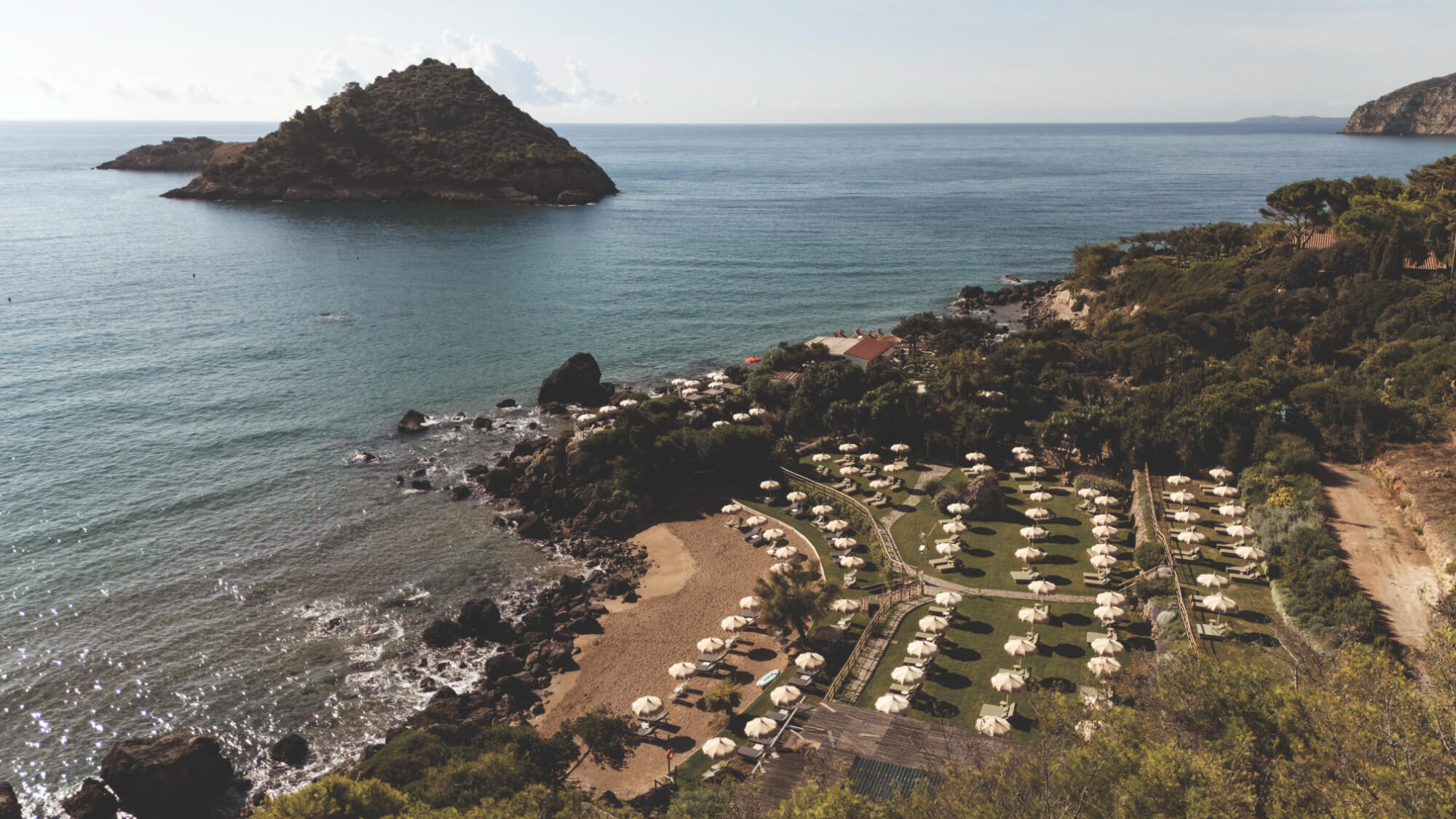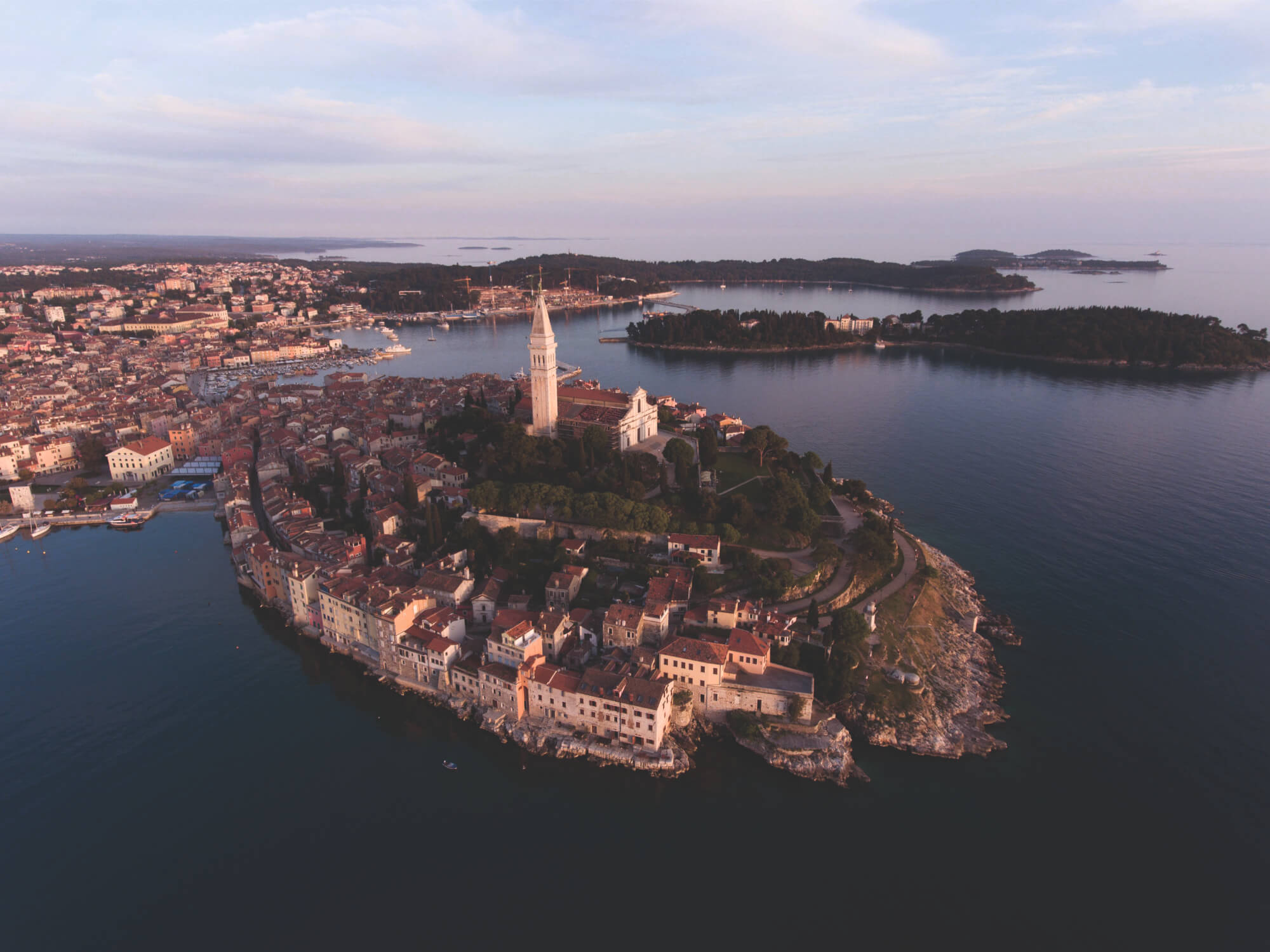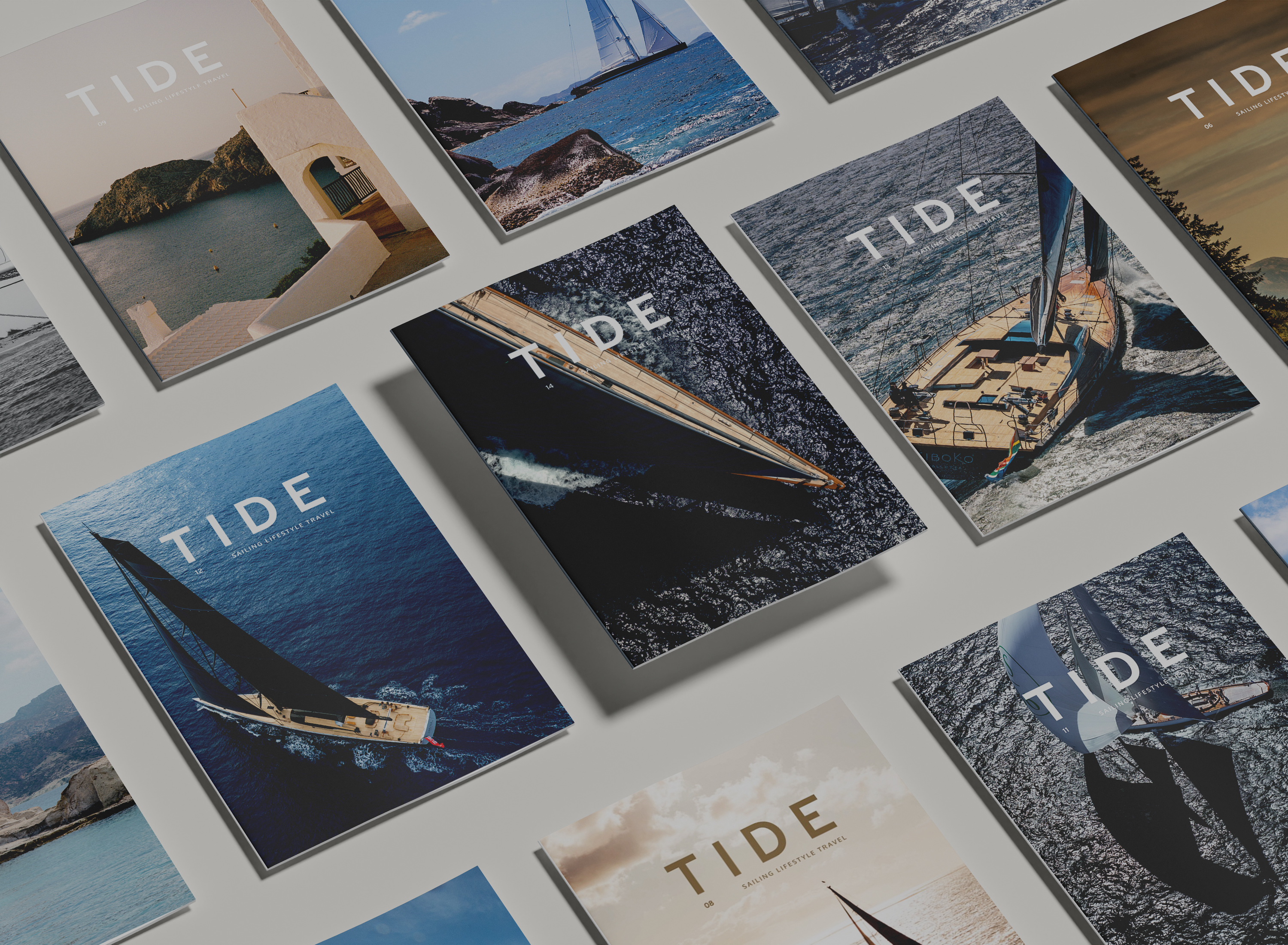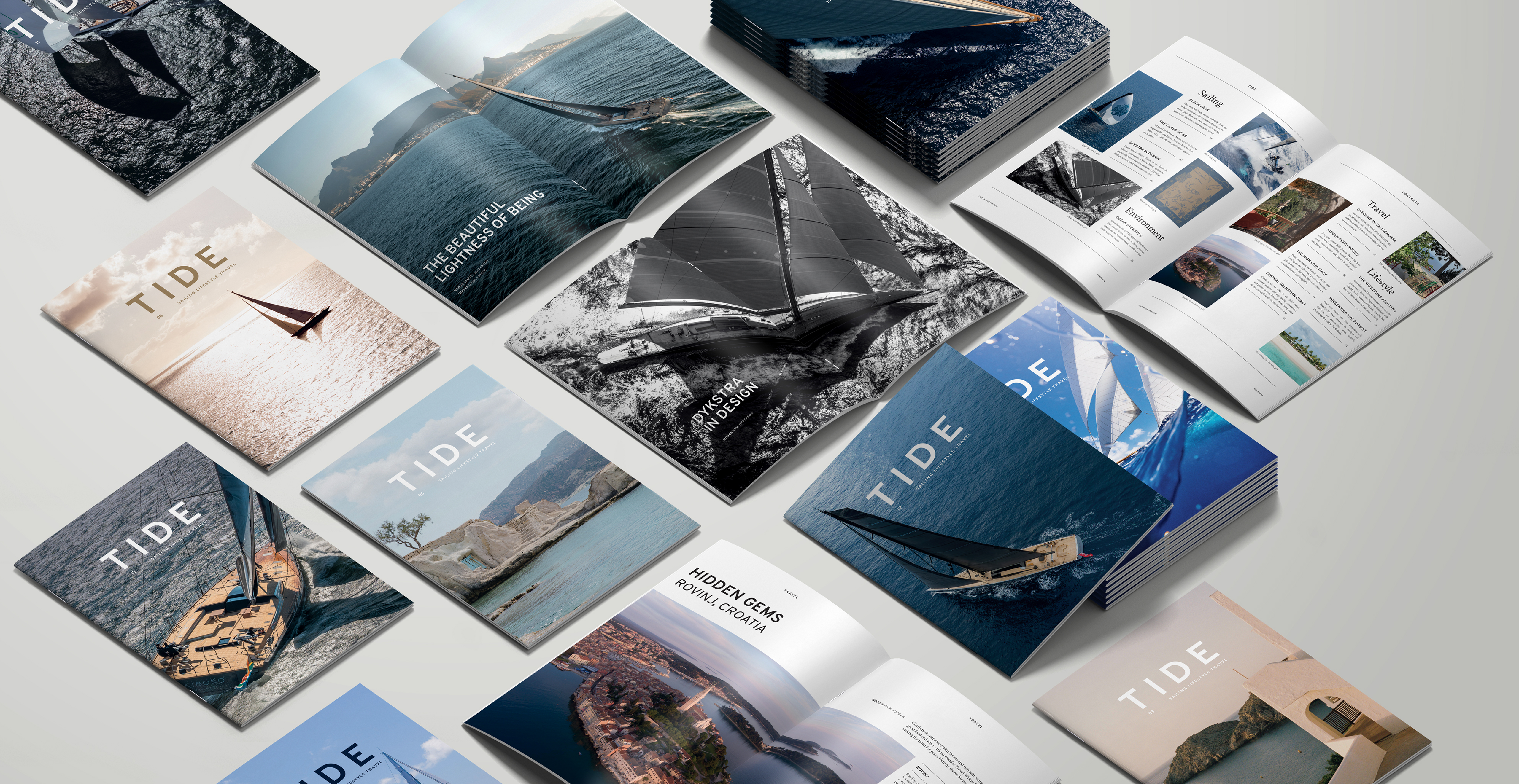One of the four historical regions of Croatia, the Dalmatian Coast is fast surpassing Greece, Italy and the South of France as far as the elite sailing community are concerned. This section of the famously beautiful Adriatic coastline has hundreds of sandy islands, walled citadels, and among the most spectacular turquoise waters in Europe. The region is also home to some of the most famous cities, towns and tourist attractions in Croatia, including Dubrovnik, Šibenik, Split and Zadar, as well as an array of UNESCO World Heritage Sites. Aside from these main attractions, though, there are still countless hidden gems to be found if you know where to look. Just down the coast in little Montenegro, meanwhile, adventurous sailors are rewarded with steep, dramatic mountain landscapes sloping straight down into the water. The sea here is cool, clean and impossibly deep blue, a world apart from the Italian coastline just a short hop across the Adriatic sea.
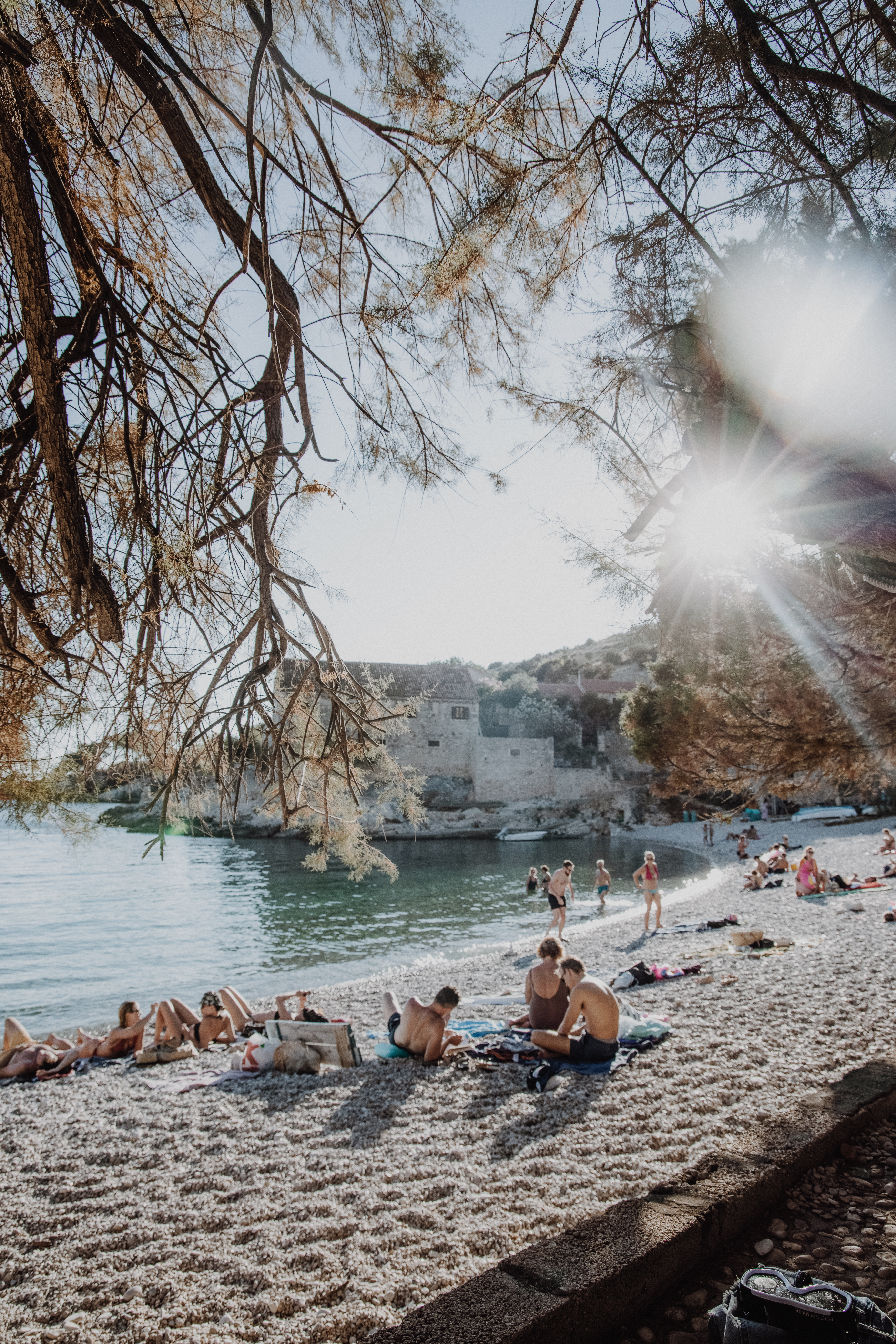
Hvar
Often known as Croatia’s party island, Hvar’s more laid-back, bohemian side comes as a welcome surprise on a sailing itinerary. While Dubrovnik and Split are mostly rocky swimming spots and beach clubs, Hvar has secluded pine tree-lined beaches in abundance. Zucia is a small paradise best reached by boat, though there is a gravel path leading to the nearby village of Zavala if you wish. Even more remote are the sandy archipelago of the Pakleni islands, with plenty of anchorage spots and deserted sandy beaches. If you do fancy a bit of beach club energy, head to Bonj les Bain, a historic waterside spot which was originally built in 1927 and still attracts the glittering jet set.
Lopud
Just a couple of hours from Dubrovnik under sail, the island of Lopud is an easy day trip. Known for its natural beauty and quiet pace of life (the island is entirely car free), the opening of the extensively renovated Lopud 1483 has added just a splash of ultra-luxury to the otherwise sleepy island. Over the last 20 years, the 15th century fortress and monastery have been beautifully restored under the guidance of Francesca Thyssen-Bornemisza, amassing an impressive art collection which includes original Renaissance and Gothic pieces. Hire bikes from the main village or head off on foot to discover quiet sandy beaches and exceptional sunsets. From the top of the tower, you’ll experience majestic views over the neighbouring island of Šipan and the national park on Mljet.
Šipan
From Lopud, you can sail to various other hidden coves around the Elaphiti islands and islets, many of which are utterly secluded. As a place to anchor for a night or two, Šipan is the largest of the Elaphiti islands, located just 17 km northwest of Dubrovnik. In-the-know sailors make a beeline for the tiny village of Suđurađ, where Bowa Restaurant is nestled invitingly into the shoreline. Made up of a series of beach huts and private cabanas, the seafood restaurant offers some of the best service and gastronomy along the coastline.
Tivat Bay
If it feels like Croatia’s glittering coastline is on the verge of becoming oversaturated with visitors, then Montenegro is the place for you. Cool and clean and incredibly deep, the sea around pristine Tivat Bay is the antithesis of the overheated, over-crowded beaches the rest of the Med saw this summer. There are still only a handful of tasteful 5* hotels and beach clubs: the rest is pure, unspoilt nature.
Base yourself near Nikki Beach for the best of both worlds – a luxurious day lounging by one of the four swimming pools, mixologists and live saxophonists at your beck and call – with Montenegro’s characteristic deep blue-green expanse of water sweeping out before you as far as the eye can see. Adventurous swimmers can take a dip in the refreshingly cool sea, or paddle board all the way out to the small island of Gospaod Milosdra.
Bay of Kotor
Framed by the stunning natural beauty associated with Montenegro, the ancient waterside city of Kotor is also a UNESCO World Heritage site, home to a number of cultural and historical attractions. To get to this secluded bay, you’ll have to sail through a narrow inlet and into what feels like a giant lake. In Kotor itself, cobbled streets are lined with tiny eateries serving Montenegrin and Balkan specialities, with Romanesque churches perched on the hills far above. On the way here, stop off at enchanting Perast, a small, picturesque town with an ancient maritime history.
If you want to dock somewhere with more amenities, Porto Montenegro is one of the most sought-after marinas in the Mediterranean. Here, you’ll find dining restaurants and five star facilities galore, as well as some excellent window-shopping for new yachts before you continue on your adventures.


